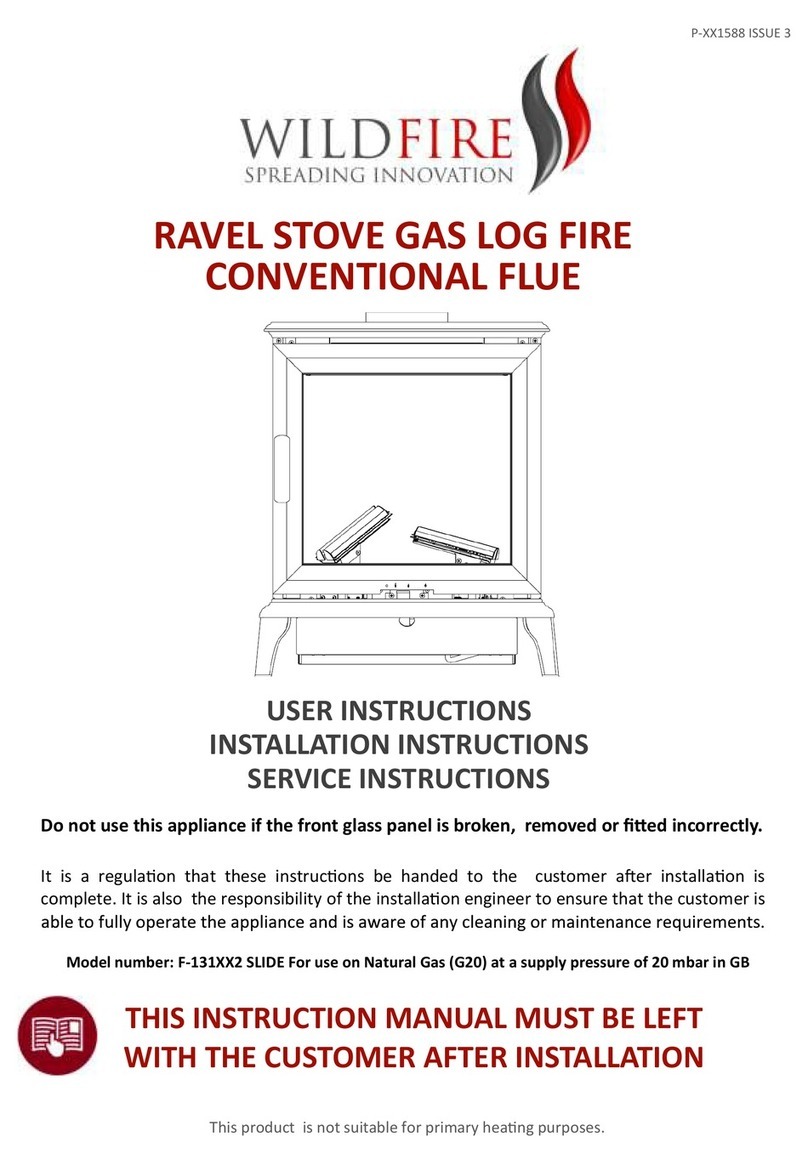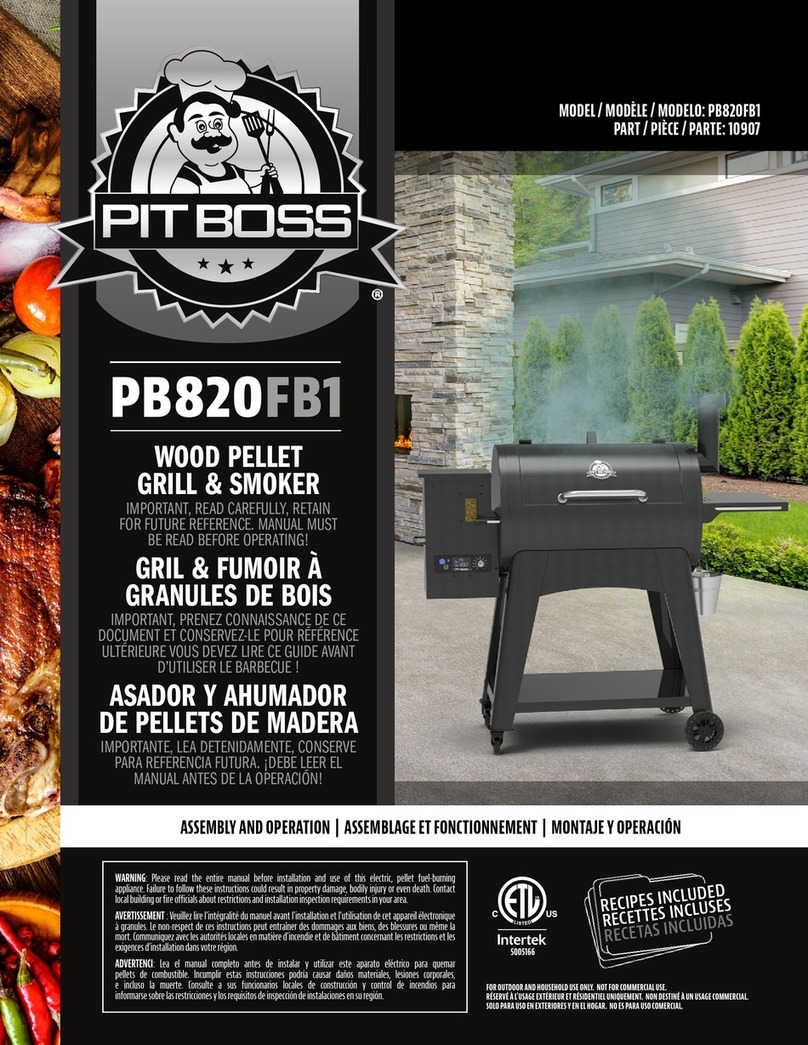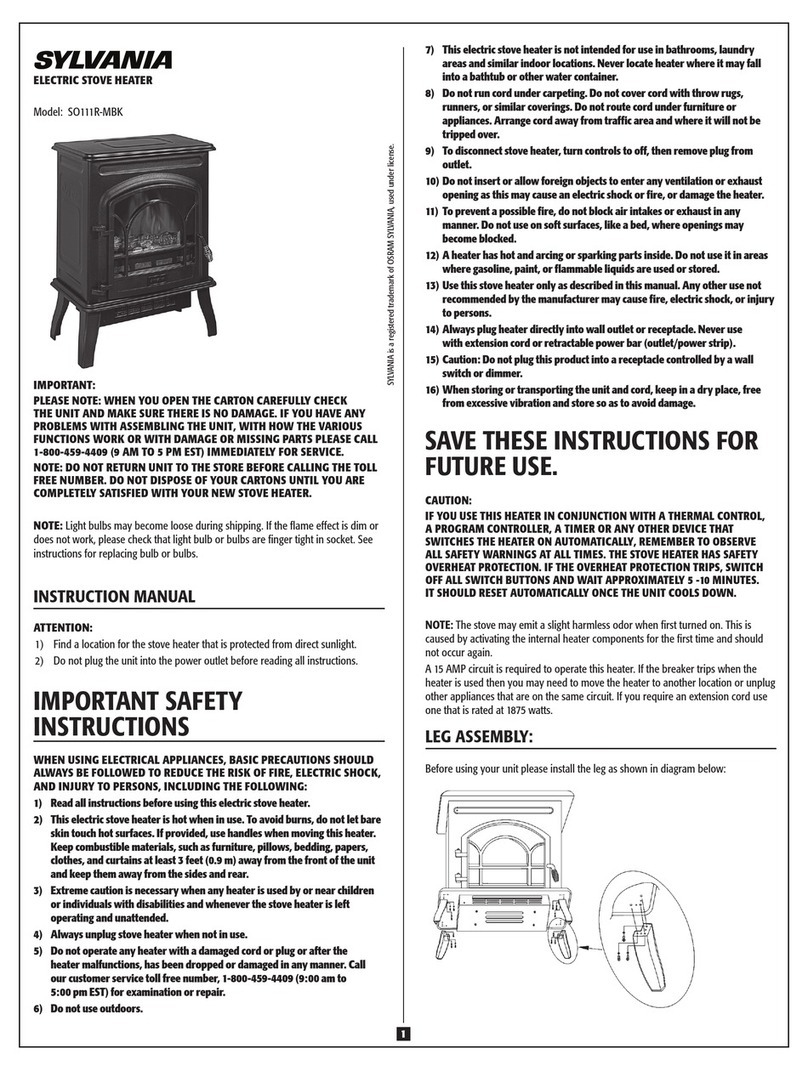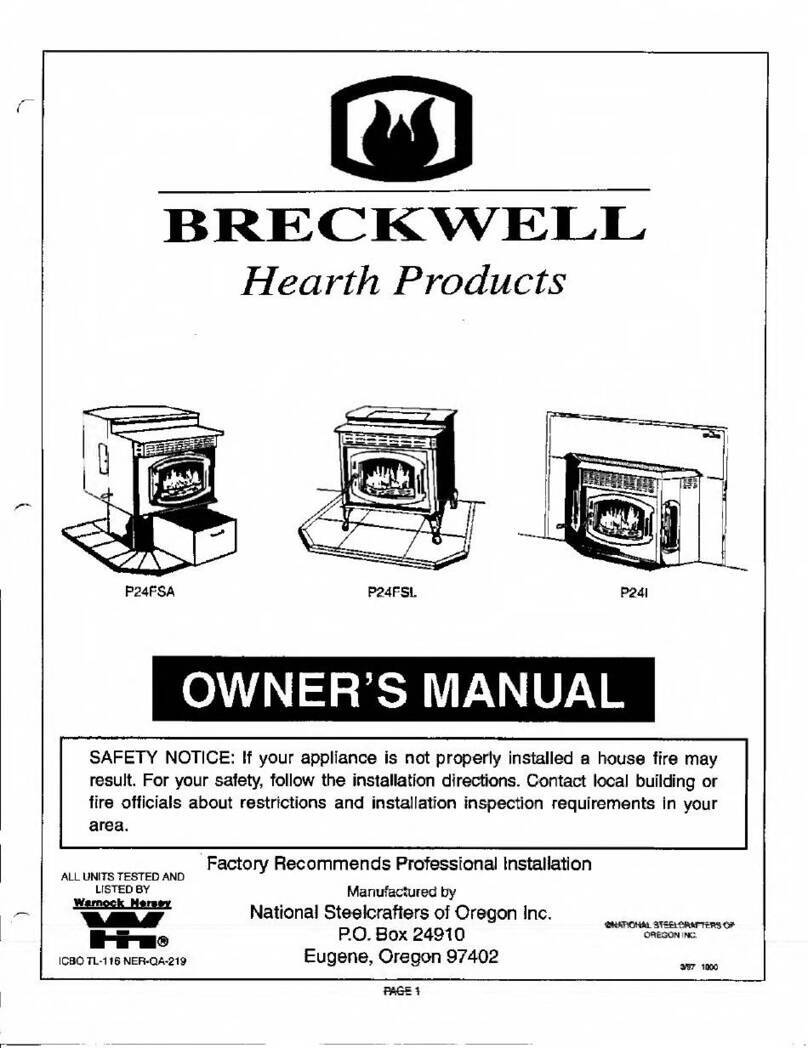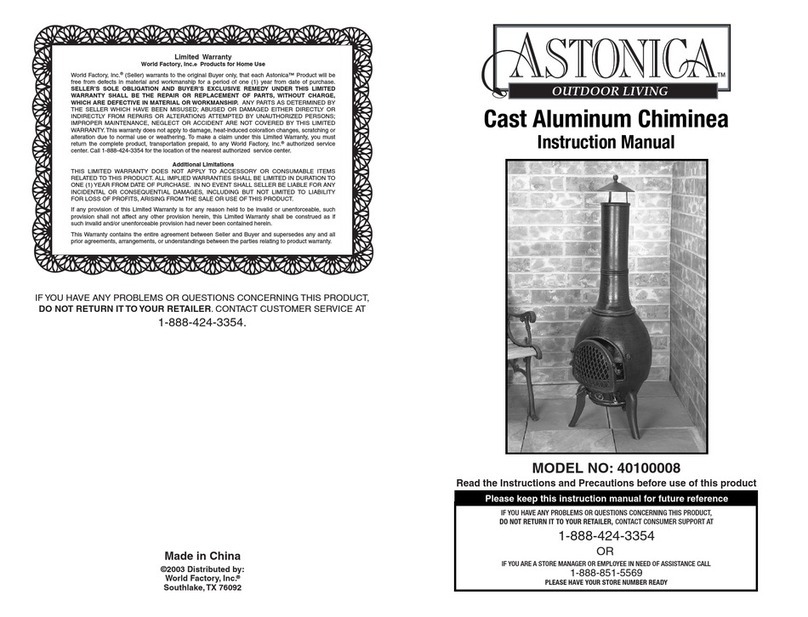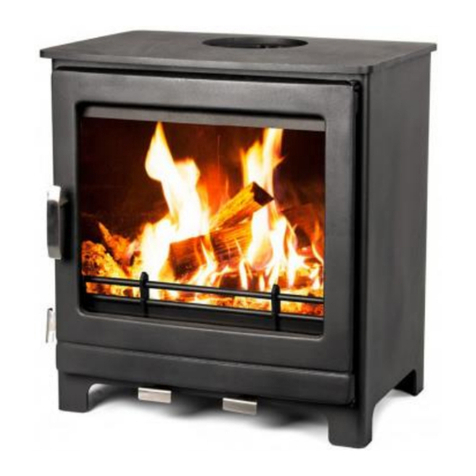Before fitting the Fire Door it is important that a competent person checks the existing fireplace is built in
accordance with local building regulations. Using a correctly fitted Fire Door will increase the temperature inside the
fire chamber. All the materials used in the construction of the fireplace must be able to withstand a normal
operating chimney temperature of 450°C with possible peaks of 600°C.
WARRANTY
2 Years – Your warranty covers replacement of the Fire Door body if it is found to be defective within 2 years of
purchase. Labour and shipping costs are not covered.
Not Covered
Glass, rope seals, baffle plate.
Defects or faults caused by local conditions such as draught problems and chimney defects.
Damage caused by over firing.
Damage resulting from the use of unsuitable fuel.
Unauthorised modifications, misuse, neglect, abuse, excessive wear and tear and the use of non-original
replacement parts will invalidate the warranty of the Fire Door.
INSTALLATION
VENTILATION
Your fireplace requires ventilation to supply it with air for combustion. Ventilation is also required for proper
operation of the chimney to ensure that the products of combustion are safely dispersed to the outside air.
Extraction fans lower the pressure in a building which can cause spillage of combustion products from an open-flued
appliance. This can occur even if the appliance and the fan are in different rooms. If mechanical extraction is
unavoidable in the same room as your stove then seek specialist advice to ensure safe operation of the appliance.
A trained competent person should check air supply is adequate.
FLUE / CHIMNEY
It is important that the chimney and recess to which Fire Door is to be connected has been checked by a competent
person to ensure its suitability and that it will work safely. The chimney or flue and installation should comply with
local and national building regulations. This component is not suitable for a shared flue.
A flue draft of 10 – 20pa will be required and the following considerations should be taken into account to ensure
safe operation of the fireplace after this component is fitted.
•The chimney should have an internal diameter of between 150mm and 300mm.
•It should be able to operate safely at temperatures of 450° C.
•It should be free from leaks.
•It should be free from any internal obstructions.
•It should be at least 4.5 metres from the top of the stove outlet to the top of the chimney.
•The chimney should be free from down draft and should typically extend above ridge level.
•The appliance must not be connected to a shared flue system of any type.
•Provision should be made to ensure the chimney can be swept in the entirety of its length.

